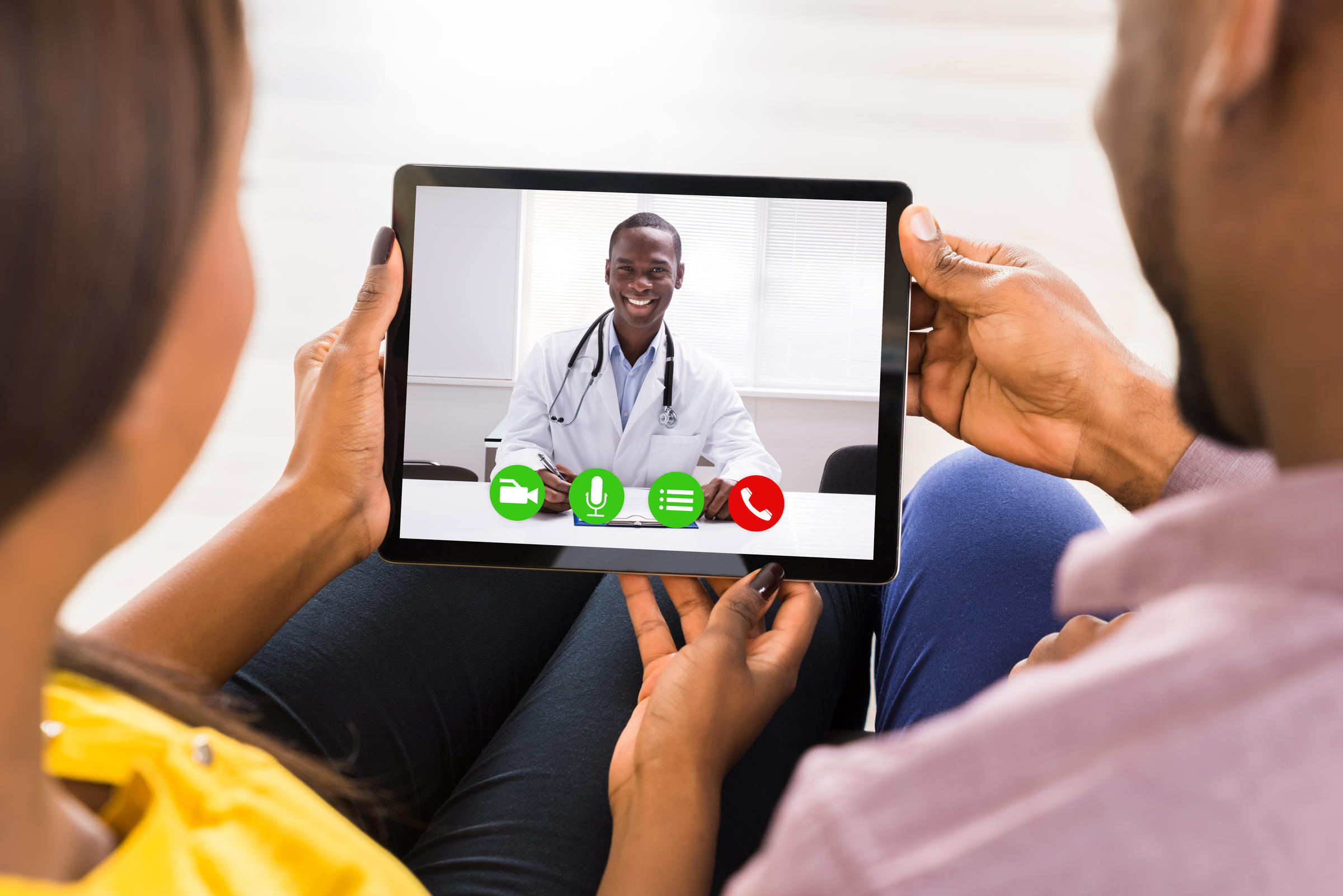Blog

Providing Care and Services Remotely through Telehealth
February 14, 2021
By Jean Daniel Desrosiers, MD, MBA, MS
Telehealth is an appropriate solution to a broad array of healthcare issues. As an innovative and promising technology, it allows the exchange of health information and services remotely. Marginally used at first, the adoption of Telehealth systems has grown rapidly. The rapid development of Information and Communication Technologies (ICTs) and their wide internet penetration across the globe has generated a lot of interest in that field. Telehealth is revolutionizing healthcare delivery as we speak. Studies have demonstrated various benefits in the application of Telehealth and its potential to overtake some aspects of traditional medicine. This article will focus on how innovation is impacting the healthcare profession as we know it. The discussions will highlight the benefits, advantages, and limitations of this discipline.
The use of Telehealth has broadened the array of possibilities for doctors, nurses, and other healthcare professionals. Telehealth has been a cost-effective way to overcome access, wait time issues while facilitating patients’ referrals. Nowadays, with the shortage of physicians, access to healthcare is even more challenging. Innovative solutions like Telehealth have shown potential in addressing health services delivery in areas experiencing a lack of health professionals or limited access to health services.
Telehealth and other technological advances have impacted the healthcare industry tremendously. Technology is shaping the future of healthcare through optimal use of data, Electronic Health Records (EHRs), education tools for patients and providers, telehealth initiatives, and the transfer of scientific knowledge. As Telehealth evolves, some specialties are emerging due to their remote management potential. Among them, teleradiology, telepathology, telecardiology, teledermatology, and telepsychiatry are very popular. Each one of those new fields has opened new job opportunities for information and communications technology professionals.
Telehealth enhances continuity of care by providing vast opportunities for healthcare providers to communicate with patients directly and monitor patient activity beyond the hospital environment. Telehealth consultation allows multi-channel communication among the patient and other healthcare providers, including physicians and nurses, thus facilitating improved patient care. It helps overcome geographic proximity issues in providing access to healthcare services to anybody regardless of their location. It also enables many specialists to provide coordinated care to patients remotely with a lot of flexibility. It addresses the critical issue of long waiting times that is frequently encountered by patients when scheduling doctors’ appointments. A large percentage of patients have chronic health conditions that require treatment plans that incorporate home monitoring technologies. Telehealth technologies have been shown to significantly improve chronic disease management while ensuring compliance and reducing care costs. Substantive evidence has been gathered regarding Telehealth’s potential to promote preventive care, health education and disease screening. Telehealth technologies can be utilized to capture and exchange high-resolution digital images. Teleconsultation services facilitate access to multiple health professionals simultaneously, effectively reducing patient costs. Remote electronic applications have been employed in hospital logistics and patient care management, providing clinicians with real-time information on bed space availability and physicians’ schedules.
As discussed previously, the implementation of Telehealth can take various shapes and forms. Some models have shown great overall benefits that are equal or sometimes superior to traditional office visits. The role of Telehealth in chronic disease management, for instance, has exceeded expectations. At times, Telehealth’s quality of care was comparable to conventional medicine based on the model implemented. However, the technology should be tailored to the types of patients targeted. Matching the right patient with the right technology is crucial. Glitches and confidentiality issues are among the most reported challenges. Therefore, maximum consideration should be given to the technical staff in charge of managing the technology. Designers should be extremely qualified and capable of incorporating health professionals’ views into the system. On both sides of the spectrum, end-users should go through rigorous training conducted by highly trained individuals.
The increased acceptance of Telehealth models across the continuum of care indicates that it drives the future of healthcare delivery around the world. Healthcare providers have seen a paradigm shift in the manner they can communicate with patients. Mobile health technology holds great potential for engaging individuals in disease prevention and health promotion. The techniques are cost-effective, very flexible, and their ability to reach patients in a remote area is unparalleled. Numerous new job descriptions have emerged to support the implementation of healthcare information exchange. The emergence of new electronic technologies to deliver care presents invaluable opportunities to support value-based medicine.
Jean Daniel Desrosiers is a cofounder of DOKPAM and member of the organization’s team of medical and health information systems editors.
Other post that might be of intrest for you.


